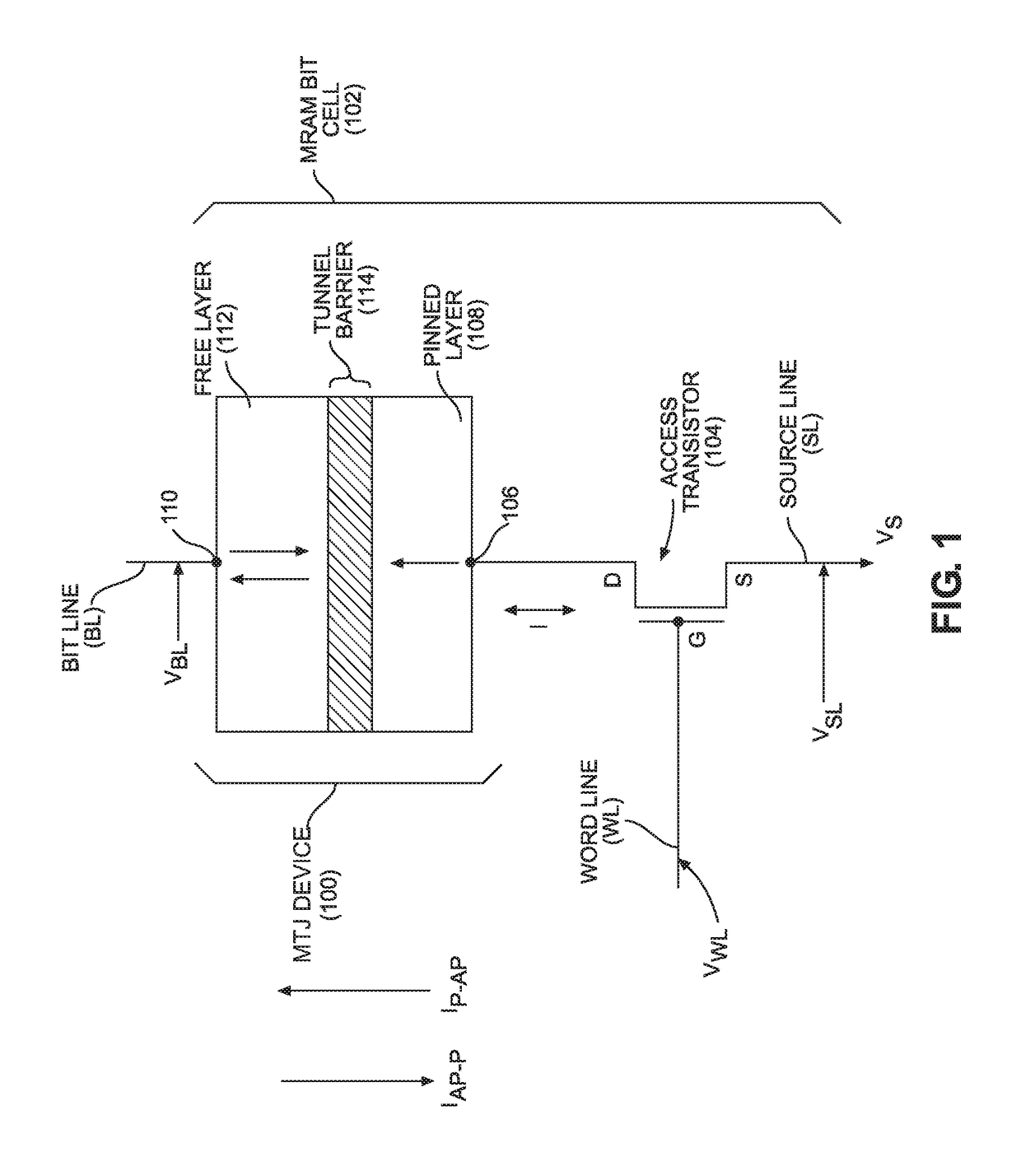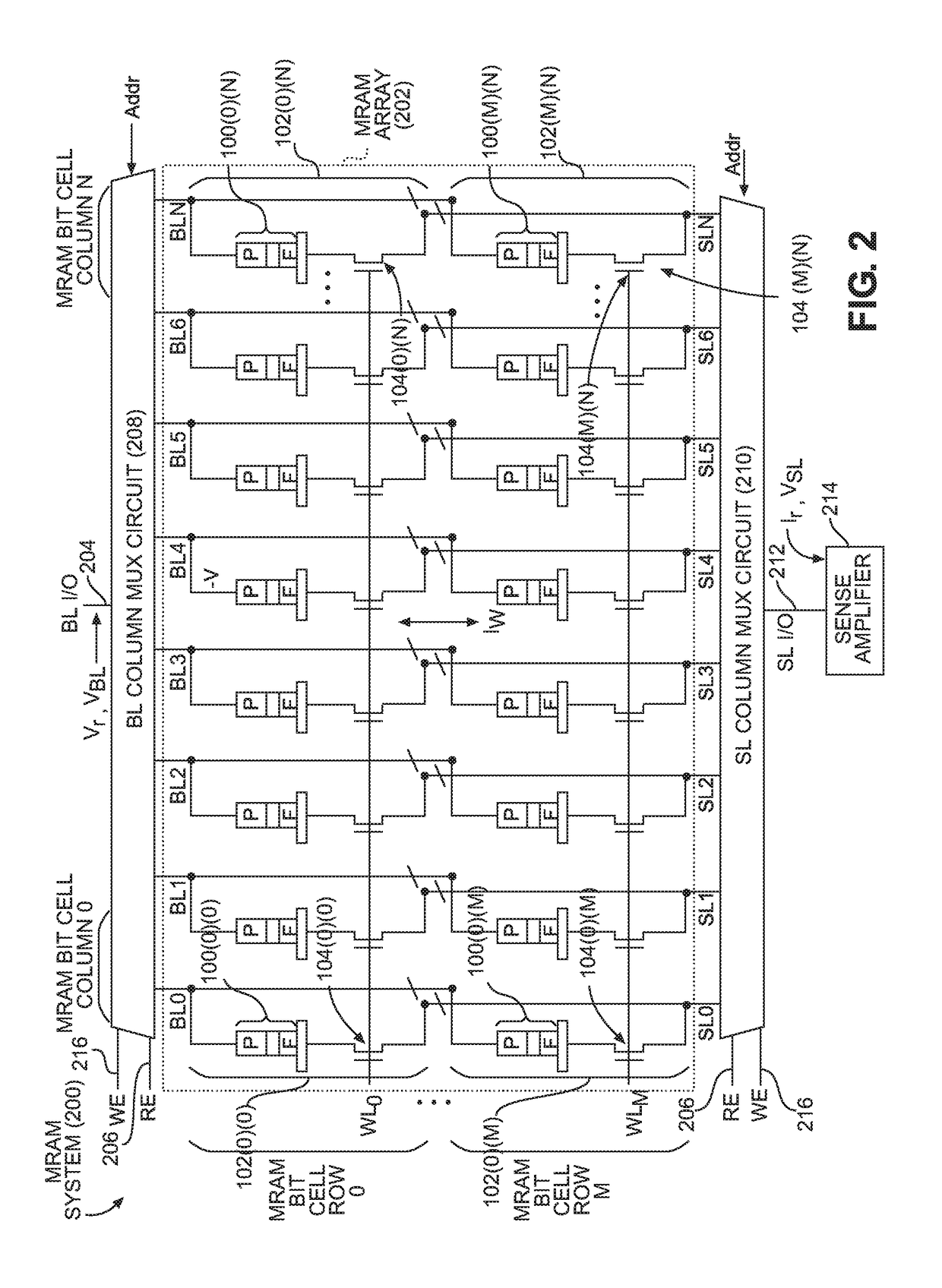Voltage-switched magneto-resistive random access memory (MRAM) employing separate read operation circuit paths from a shared spin torque write operation circuit path
a random access memory and magneto-resistive technology, applied in the direction of digital storage, instruments, semiconductor devices, etc., can solve problems affecting the read window, and achieve the effect of lowering the energy barrier of mtj devices, less energy, and low energy barrier
- Summary
- Abstract
- Description
- Claims
- Application Information
AI Technical Summary
Benefits of technology
Problems solved by technology
Method used
Image
Examples
Embodiment Construction
[0035]With reference now to the drawing figures, several exemplary aspects of the present disclosure are described. The word “exemplary” is used herein to mean “serving as an example, instance, or illustration.” Any aspect described herein as “exemplary” is not necessarily to be construed as preferred or advantageous over other aspects.
[0036]Aspects disclosed in the detailed description include voltage-switched magneto-resistive random access memory (MRAM) employing separate read operation circuit paths from a shared spin torque write operation circuit path. In exemplary aspects disclosed herein, the MRAM includes an MRAM array that includes one or more MRAM bit cell rows that each include a plurality of MRAM bit cells. Each MRAM bit cell includes a magnetic tunnel junction (MTJ) device that is configured to either be in a parallel (P) or anti-parallel (AP) magnetization state to store representations of a logical ‘0’ and ‘1’ for providing memory storage. MRAM bit cells on an MRAM b...
PUM
 Login to View More
Login to View More Abstract
Description
Claims
Application Information
 Login to View More
Login to View More - R&D
- Intellectual Property
- Life Sciences
- Materials
- Tech Scout
- Unparalleled Data Quality
- Higher Quality Content
- 60% Fewer Hallucinations
Browse by: Latest US Patents, China's latest patents, Technical Efficacy Thesaurus, Application Domain, Technology Topic, Popular Technical Reports.
© 2025 PatSnap. All rights reserved.Legal|Privacy policy|Modern Slavery Act Transparency Statement|Sitemap|About US| Contact US: help@patsnap.com



